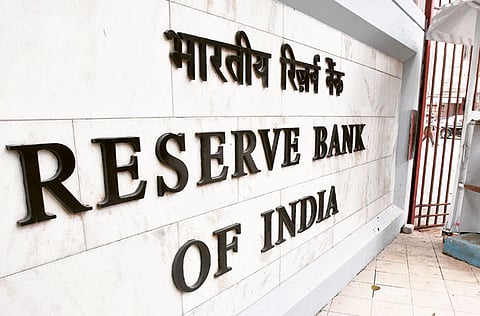RBI goes for short term rate hike to stem rupee rout
India's boldest attempt yet to stem a rout in the rupee sends bond and stock prices tumbling

Mumbai: India’s boldest attempt yet to stem a rout in the rupee delivered only a modest lift in the currency but sent bond and stock prices tumbling on Tuesday, sparking concern that the unexpected measures inflict too much pain for limited gain.
Late on Monday, the Reserve Bank of India raised short-term borrowing costs, restricted funds banks could access and said it would drain cash from the market via a 120 billion rupees ($2 billion) bond sale as it sought to create demand for the rupee , which hit a record low last week.
The steps make it harder to speculate in the rupee and are intended to attract foreign inflows needed to fund a record current account deficit, but markets were not convinced.
“The best case or what we are all hoping for is that these are short-term measures purely to drive home a point, that it does not endanger growth in the long term,” said Ananth Narayan, co-head of wholesale banking for South Asia at Standard Chartered Bank.
While the central bank stopped short of an outright policy rate hike, its moves will still raise funding costs for firms that are already facing the slowest economic growth in a decade.
“These measures are intended to quell speculation or excessive speculation in the forex market, trying to reduce volatility in forex market,” Finance Minister P. Chidambaram said.
The rupee gained to 59.43/44 per dollar from a close of 59.89/90. Last week, it fell to a record low of 61.21 and is down nearly 10 per cent since the start of May, the worst showing among emerging Asian currencies tracked by Reuters.
“The central bank, presumably reluctant to use up too many foreign exchange reserves, clearly felt it had to show a stronger intent to put a floor under the rupee,” Credit Suisse economist Robert Prior-Wandesforde wrote in a note.
Regulators have also tried to clamp down on speculative trading by focusing on onshore derivative markets.
The RBI has been reluctant to intervene aggressively in the market by dipping into foreign currency reserves that cover nearly seven months of imports, as any rundown of these holdings could further erode foreign investor confidence.
But as bond yields surged, analysts said the risk was that higher borrowing costs would become hard to reverse, and said there had to be steps to narrow the current account deficit from a record 4.8 percent of gross domestic product.
“These measures do little to address the structural issues that have caused the rupee to underperform versus the rest of the region in 2013. Although the current account deficit has narrowed, it is still sizable and provides an enduring demand for US dollars onshore,” HSBC analysts said in a note.
Bank of America-Merrill Lynch cut its GDP forecast for Asia’s third-largest economy to 5.5 per cent from 5.8 per cent for the fiscal year that ends in March 2014.
It also cut its forecast for further official interest rate cuts in 2013/14 to 50 basis points from 75 basis points.
The government is preparing measures to open up more sectors such as defence for foreign investors, in measures similar to the ones taken in September when the country further opened up its retail and aviation sectors.
Sign up for the Daily Briefing
Get the latest news and updates straight to your inbox


